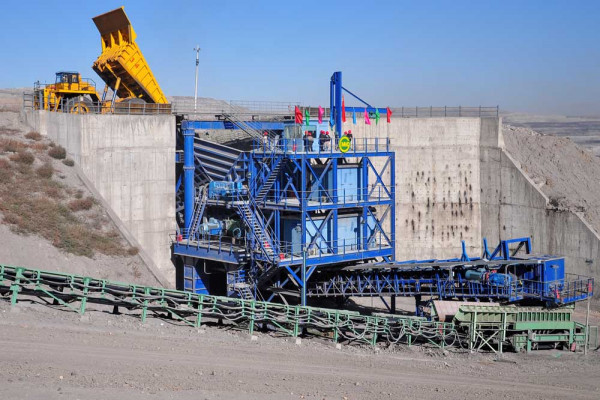And for investors searching for the sharp end of fractious geopolitics, look no further.
The energy price shock surrounding a pandemic reboot and Russia’s invasion of Ukraine early last year had almost disappeared, offering significant relief to global stock and bond markets battered by the hit to the economy, household demand and the inflation and interest rate fallout.
But oil remains a powerful political lever as antagonistic economic blocs coagulate around the G7-led Western world and the expanded BRICS-plus grouping that took shape last month – a bloc that now contains six countries producing about as much oil as the rest of the 20 top producers put together.
Oil prices spiked more than 1% on Tuesday after Saudi Arabia and Russia – the world’s top two oil exporters – announced a fresh extension to their voluntary supply cuts, stretching a combined 1.3 million barrels per day reduction for another three months through December. Brent crude topped $90 for the first time this year. If that price gain holds – and economists at UBS see an oil market still some 1.5 million barrels undersupplied through this month and forecast further 5% price gain by year-end – then the rolling year-on-year decline in Brent that’s persisted since January will evaporate as soon as this week.
That negative annual base effect, which had been as high as 40% variously in March, May and June, has been a powerful downward force on headline inflation across the world throughout the year.
And by extension, that’s taken pressure off central banks racing to jack up interest rates to their highest in decades and to drag inflation back to 2% targets.
According to the Organization for Economic Cooperation and Development, annual aggregate inflation across the G7 economies has almost halved to 3.9% in the year through July, but is still almost twice central bank goals.
The resurgence of energy prices due to renewed supply restrictions, alongside a better outlook for U.S. and global demand than there was six months ago, potentially complicates the final throes of that central bank battle just as investors had felt confident peak rates were in sight.
“The path of inflation remains a risk for most central banks,” said Barclays economists Christian Keller and Akash Utsav. “Further progress is likely to become more difficult as base effects fade, and supply-constraints could drive global energy and food prices higher again.”
Markets are betting – just about – that the Federal Reserve and European Central Bank are now done with their severe rate rise campaigns of the past 18 months and that the Bank of England has just one more left.
But many policymakers openly admit concern about calibrating the lengthy lags with which policy tightening hits and the prospect of new shocks developing in the interim. This leaves many of them with little confidence the battle with inflation can stop here and extreme wariness of any early easing.
If energy prices now turn from tailwind to headwind it raises the prospect of both more stubborn inflation readouts and further tightening as well as the risk that inflation expectations – still hovering around 2.3% to 2.5% in financial markets – become more entrenched across the wider economy.
Brent crude prices have risen 27% since mid-year and U.S. crude is up 30%, with U.S. retail pump prices already up almost 10% so far since June.
SLOWING DESCENT
And alongside creeping worries about rising debt supply, the long end of bond markets has been rattled again by the oil price jump.
After some respite in the second half of August, U.S. Treasury yields have resumed climbing, and that slaps a brake the large swathes of the equity market too.
While there are some winners from the move, such as U.S. energy stocks, another energy sideswipe would unnerve most investors going into another Northern winter.
The picture is more complicated in Europe, where natural gas prices remain under wraps after latest year’s even bigger Russian supply shock, due to a combination of impressive storage and efficiency drives as well as fiscal subsidies to cushion effects on consumers.
And this has been a far bigger influence on the inflation trajectory than oil prices per se.
Yet, restive crude prices will still cloud a messy and tricky battle with inflation expectations just as policy tightening cycles near an end.
Oxford Economics Economist Andrew Goodwin reckons the oil price effect is largely drowned out in Britain by the huge natural gas shock and its base effects, but it “slows the descent of inflation even if doesn’t turn the corner.”
Oxford Economics expects further inflation declines this year, and yet its year-end British inflation forecast of 4.5% is still more than twice the Bank of England target.
While central banks prefer to concentrate on “core” inflation rates that cut out traditionally volatile and sometimes seasonal energy and food price moves, the debate about how energy affects inflation in other prices is not easily resolved.
The question typically hinges on how high and resurgent energy prices pass through to “core” inflation in services and non-energy goods such as airfares or retail costs or have second-round effects on wage bargaining and corporate pricing.
International Monetary Fund studies underline that uncertainty by saying there’s no single way to capture the “pass through” from oil prices to wages other than so show it’s decline over time in the West, the fact it’s highly dependent on strength of collective wage bargaining and that it’s effect is higher when overall inflation is already high.
But for markets, it makes the complicated task of parsing peak rates and inflation even trickier, reducing hopes that the coast may clear.
The opinions expressed here are those of the author, a columnist for Reuters.
Share This:




